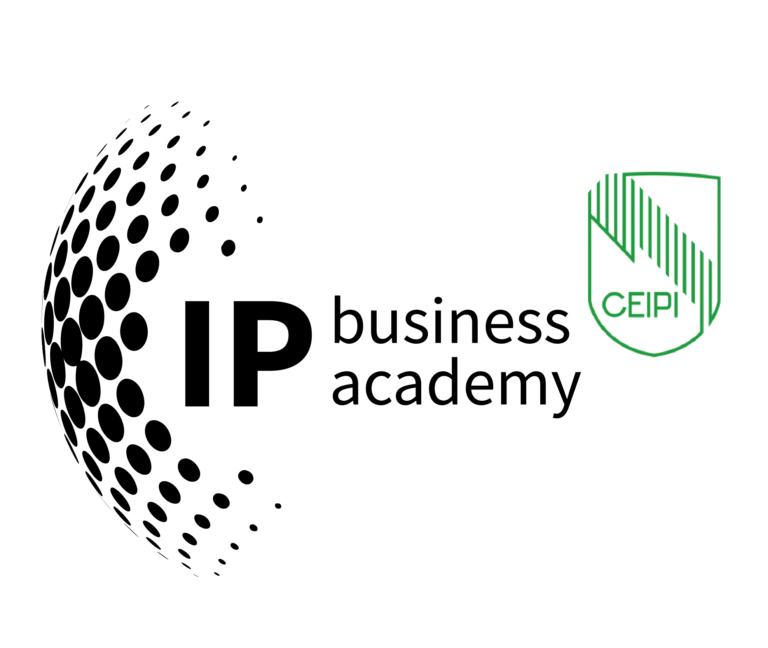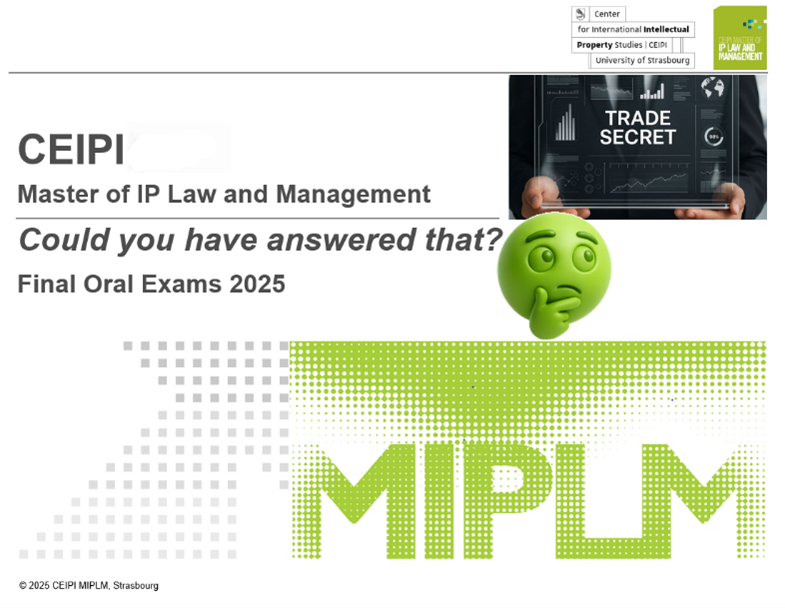Could you have answered that? Cracking the CEIPI MIPLM’25 Exam on trade secret management in innovation-driven companies
Task 24 of the CEIPI MIPLM’25 exam challenges candidates to explain the management of trade secrets in innovation-driven companies.
The exam question
The oral exam question presented to the MIPLM candidates is based on a realistic and increasingly relevant challenge: A German sensor manufacturer, SensoTrak GmbH, is developing high-performance sensing technologies that combine chemical formulations, embedded algorithms, and calibration data. While these elements are core to product differentiation and commercial success, they are either not patentable or would require disclosure that could jeopardize their competitive edge.
The company faces growing threats such as employee turnover, global development collaborations, and industrial espionage. Candidates are asked to design a trade secret management system that identifies, evaluates, and protects company know-how across business units. In their presentation, candidates must explain the process of classifying know-how, assess its business relevance, and propose a strategy for long-term secrecy protection, including legal, technical, and organizational measures.
Here you find the 🔎IP Management Glossary entry on Trade Secret Management
Here you find the 🔎IP Management Glossary entry on Knowledge Management
Here you find the 🔎IP Management Glossary entry on Management Control System (MCS)
What can be learned from the lecture
The CEIPI MIPLM Module 5 on trade secrets offers a comprehensive strategic and operational framework for answering this exam question. It starts with a clear understanding of what qualifies as know-how and trade secrets. Know-how includes valuable but legally non-protected inventions, processes, and business knowledge that provide competitive advantages. To be considered a trade secret, the information must be secret, commercially valuable, and subject to reasonable steps to keep it secret.
The module distinguishes between different carriers of know-how—material (e.g., prototypes), quasi-material (e.g., manuals), and personal (e.g., employees). Candidates are trained to systematically identify know-how using the business model, the value chain, and organizational structure. This includes breaking down company activities into process steps, extracting knowledge components, and verifying whether they meet the criteria of valuable, rare, sustainable, and difficult to imitate.
The module also teaches how to evaluate the relevance of know-how to company success. Know-how is scored for its contribution to revenue generation, differentiation potential, operational processes, and resource efficiency. This structured approach enables prioritization and justifies investments in protection mechanisms.
In terms of protection, the lecture provides a dual framework: factual protection through technical measures (access control, anti-tapping) and legal protection through contracts (NDAs, employee agreements, IP clauses). Strategic protection planning includes assessing risk acceptability, mapping protection measures to risks, and integrating trade secret management into corporate strategy.
IP Business Academy experts contributing to this topic
Three IP experts from the IP Business Academy provide practical insights that are directly applicable to the exam topic:
- Donal O’Connell, The Strategic Power of Trade Secrets
- Dirk Crass, The Strategic Use of Patents and Trade Secrets
- Axel Oldekop, Litigation of Trade Secrets
- Paolo Beconcini, Trade Secret Enforcement in China
Learners can find deep dives, articles, and even webinars on:
- Digital IP Lexicon 🔗dIPlex on Trade Secrets
- 📑 IP Management Letter: Trade Secrets, a US Perspective
- 📑 IP Management Letter: Trade Secrets, a European Perspective
Sample solution
A robust answer to the exam question would begin by presenting a three-stage system for trade secret management: identification, evaluation, and protection.
- In the identification stage, SensoTrak GmbH must systematically audit its operations to locate trade-relevant know-how. This is done by analysing three views: the business model (e.g., customer relationships, pricing models), the value creation chain (e.g., inbound logistics, production, marketing), and the organizational structure (e.g., R&D, HR, sales). For each area, process steps are broken down, and specific knowledge components are listed. Examples include calibration routines, firmware architectures, coating techniques, and supply chain insights. The company should distinguish between codified know-how and tacit knowledge held by employees or partners.
- Next comes the evaluation stage. Each identified knowledge component is assessed against four weighted categories: revenue impact, differentiation potential, operational importance, and resource efficiency. For instance, a unique calibration process that enables faster sensor response could score high on both differentiation and operational reliability. In contrast, standard procedures for ordering supplies may be excluded from protection focus. The result is a prioritized list of high-value know-how components, classified according to protection needs.
- In the protection stage, the company implements layered safeguards. Legal instruments include employee invention agreements, non-disclosure clauses in supplier and customer contracts, and joint development agreements with IP clauses. These contracts must be aligned with the requirements of the EU Trade Secrets Directive, ensuring that the secrecy measures qualify as “reasonable steps” in case of litigation.
- On the factual side, SensoTrak introduces access controls for digital and physical spaces, logging of sensitive data usage, and segmentation of IT systems to prevent internal leakage. High-value know-how is stored in restricted systems with encryption and multi-factor authentication. In critical operations, only a limited number of trained staff are exposed to full process knowledge.
- From a strategic standpoint, the trade secret protection is integrated into HR and compliance. New employees undergo onboarding with training on company secrets and legal obligations. Exit interviews ensure return or deletion of confidential materials. R&D and production teams follow project protocols that label and classify trade secrets, avoiding unintentional disclosure through publications or public presentations.
- Furthermore, SensoTrak establishes a trade secret governance unit that reports to the board. This unit maintains a protection map, monitors external risks (e.g., espionage trends), and regularly reviews the relevance and security status of protected know-how. The company also prepares for litigation by documenting the history of trade secret development, access, and measures taken—creating an evidence trail for potential court disputes.
- In cooperation projects with universities or startups, the company insists on data segmentation and defines clear boundaries for joint use. The principle of “need to know” is enforced to ensure that external parties do not gain full visibility into the company’s core innovations.
- Finally, the trade secret strategy is aligned with the company’s overall innovation and IP strategy. SensoTrak uses patents to protect visible features and trade secrets for process knowledge, know-how, and negative knowledge. The choice between patent and secrecy is decided during the product development phase based on risk, visibility, and imitation potential.
By treating trade secrets as dynamic business assets, rather than just legal constructs, the company strengthens its innovation capabilities and protects future market positions. This multi-level approach reflects a mature IP management function and answers the exam question in both conceptual and practical terms.
Conclusion
Trade secret management is no longer a secondary concern—it has become a strategic pillar of IP management in innovation-driven companies. The CEIPI MIPLM Module 5 provides the theoretical foundations and practical tools to manage know-how across the entire organization. With rising risks from digital collaboration, global teams, and fast-moving competition, companies must learn to identify, value, and protect their secrets proactively. This year’s oral exam question challenges candidates to demonstrate precisely this capability.
The IP Business Academy complements this knowledge by offering best practices from professionals such as Donal O’Connell, Dirk Crass, and Paolo Beconcini, Dr. Axel Oldekop. Their expertise helps bridge the gap between legal theory, business strategy, and operational risk management. For MIPLM students and professionals alike, mastering trade secret management is an essential step toward modern, resilient IP leadership.
And that’s the kind of thinking that could help you pass the MIPLM oral exam—and more importantly, shape the future of IP management.



